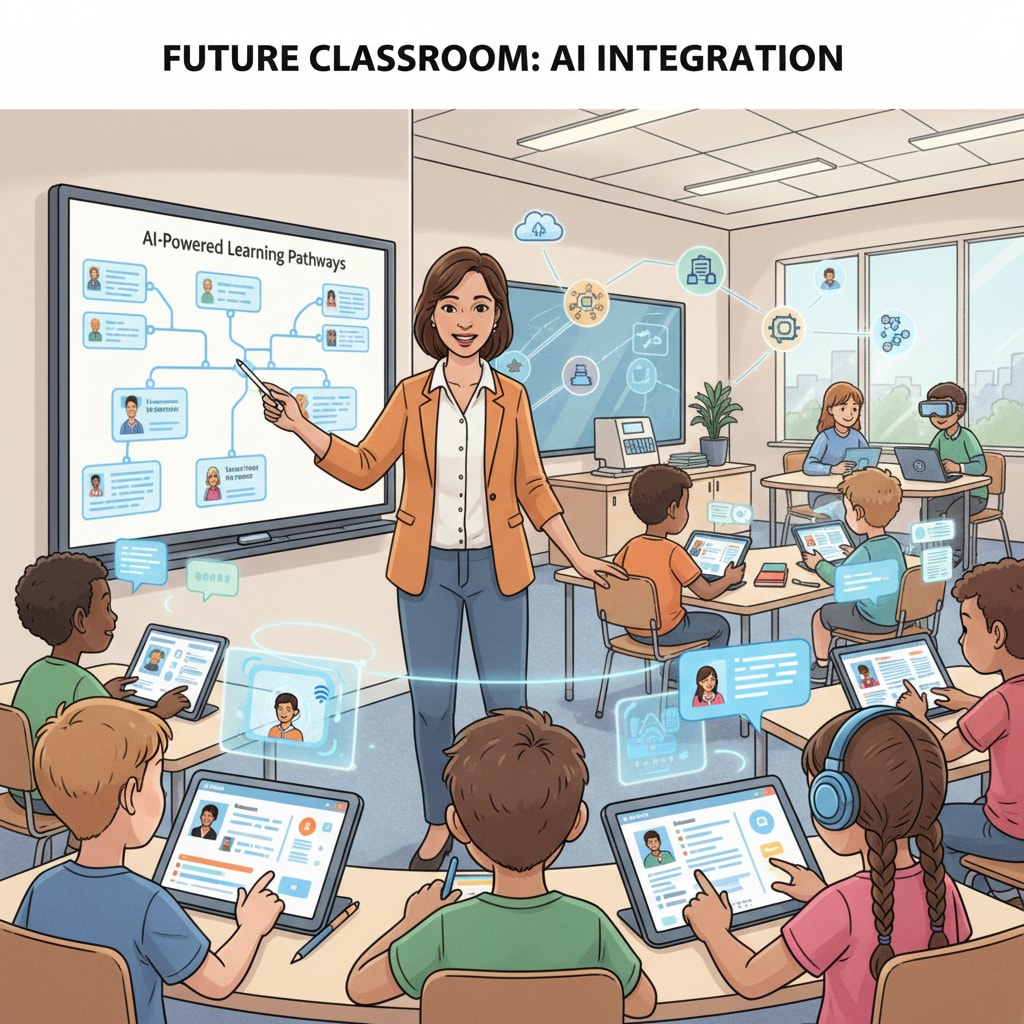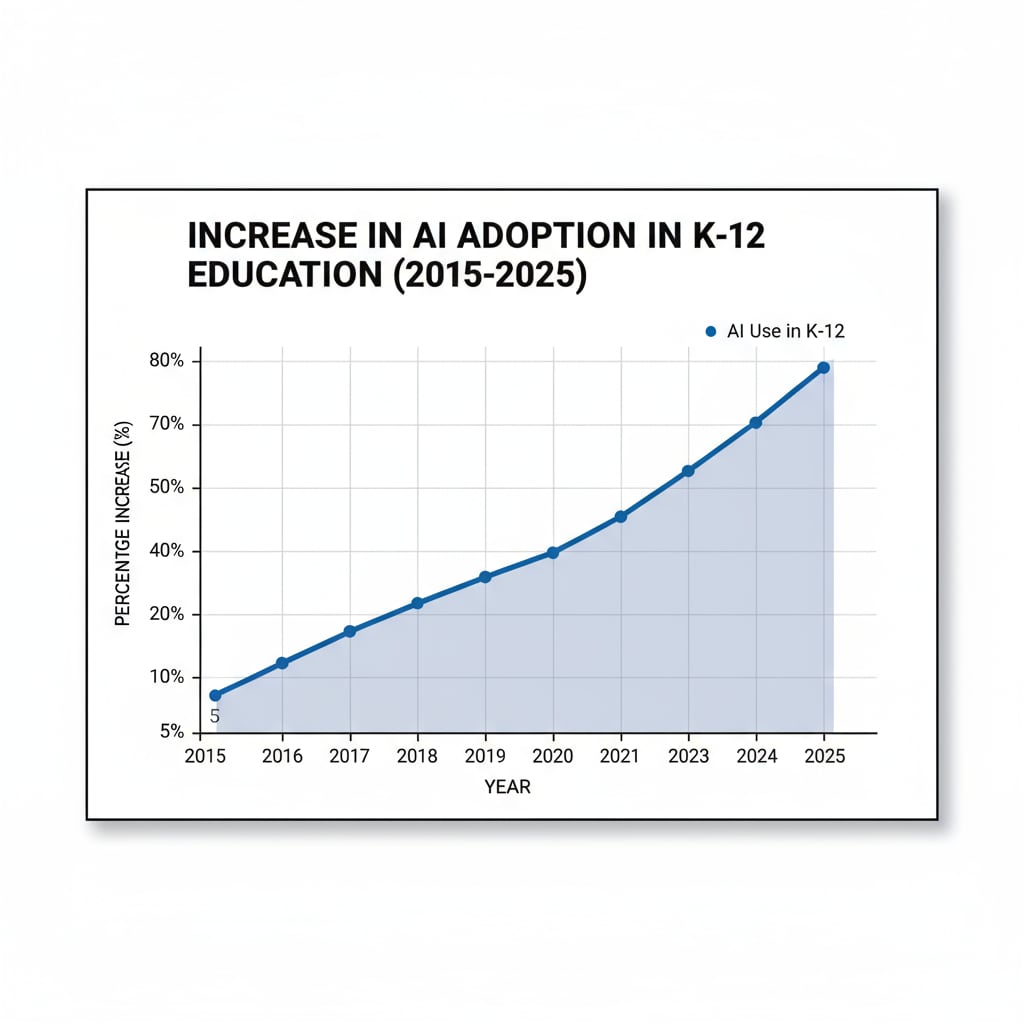Artificial intelligence, higher education, and job automation are at the forefront of discussions in the realm of K12 education. The rapid advancement of AI is reshaping the educational landscape, presenting both remarkable opportunities and formidable challenges. As technology continues to infiltrate every aspect of our lives, it’s crucial to understand how it impacts K12 education, and what steps can be taken to navigate these changes.

The Rise of AI in K12 Education
AI has made significant inroads into K12 education, transforming the way students learn and teachers teach. For example, intelligent tutoring systems can provide personalized learning experiences, adapting to each student’s pace and learning style. These systems analyze students’ performance data to identify areas of strength and weakness, and then deliver targeted instruction. According to Wikipedia’s page on Artificial Intelligence in Education, this personalized approach has the potential to improve student outcomes and engagement.

Threats to Traditional Educational Models
However, the integration of AI in K12 education also poses threats to traditional educational models. One major concern is the potential for job automation. As AI systems become more capable of delivering instruction, there is a fear that some teaching roles may be automated. This could lead to a reduction in the demand for human teachers, especially in areas where repetitive tasks are involved. Additionally, there are issues related to the quality of education. If not properly regulated, AI-based teaching may lack the human touch and emotional support that students need. As stated on Britannica’s education page, education is not just about imparting knowledge but also about nurturing students’ social and emotional development.
Another threat is the digital divide. Not all students have equal access to the technology required to benefit from AI in education. This can exacerbate existing inequalities in educational opportunities, as students from disadvantaged backgrounds may be left behind. In addition, there are concerns about data privacy. AI systems rely on large amounts of student data, and ensuring the security and proper use of this data is crucial.
Readability guidance: The rise of AI in K12 education is a complex phenomenon. We’ve explored some of the threats it poses to traditional models. Next, we’ll look at the opportunities it presents. By using short paragraphs and clearly stating points, we aim to keep the text accessible. Transition words like ‘however’ and ‘additionally’ help to connect ideas smoothly.
Opportunities for Innovation
Despite the threats, AI also offers numerous opportunities for innovation in K12 education. It can enhance the teaching and learning experience in various ways. For instance, AI-powered virtual reality (VR) and augmented reality (AR) applications can create immersive learning environments. These technologies can make learning more engaging and interactive, allowing students to explore historical events, scientific concepts, and more in a hands-on way.
Moreover, AI can assist in administrative tasks, such as grading assignments and managing schedules. This frees up teachers’ time, enabling them to focus more on personalized instruction and student support. Additionally, AI can analyze educational data to identify trends and patterns, providing valuable insights for educators to improve their teaching methods.
Readability guidance: Here we see how AI, despite its threats, brings positive aspects to K12 education. Using lists like ‘for instance’, ‘moreover’, and ‘additionally’ helps to structure the benefits clearly. Each paragraph is short and to the point, making it easier for readers to understand.
Coping Strategies for Educators
Educators need to adapt to the changes brought about by AI in K12 education. One strategy is to upskill and reskill. Teachers should learn how to effectively use AI tools in the classroom and integrate them into their teaching curricula. They can also focus on developing skills that are uniquely human, such as emotional intelligence, creativity, and critical thinking, which are difficult for AI to replicate.
In addition, educators should advocate for policies that ensure equal access to technology and data privacy. By working together with policymakers and educational institutions, they can create an environment where AI is used responsibly and to the benefit of all students. Finally, educators should foster a culture of innovation in the classroom, encouraging students to explore and experiment with AI technologies.
Readability guidance: In this section, we’ve outlined practical strategies for educators. Using ‘one strategy’, ‘in addition’, and ‘finally’ helps to organize the suggestions clearly. Short paragraphs make the content easy to digest.
In conclusion, artificial intelligence, higher education, and job automation are transforming K12 education. While there are threats to traditional educational models, there are also significant opportunities for innovation. Educators play a crucial role in navigating these changes, and by adopting appropriate strategies, they can ensure that K12 education remains relevant and effective in the age of AI.


